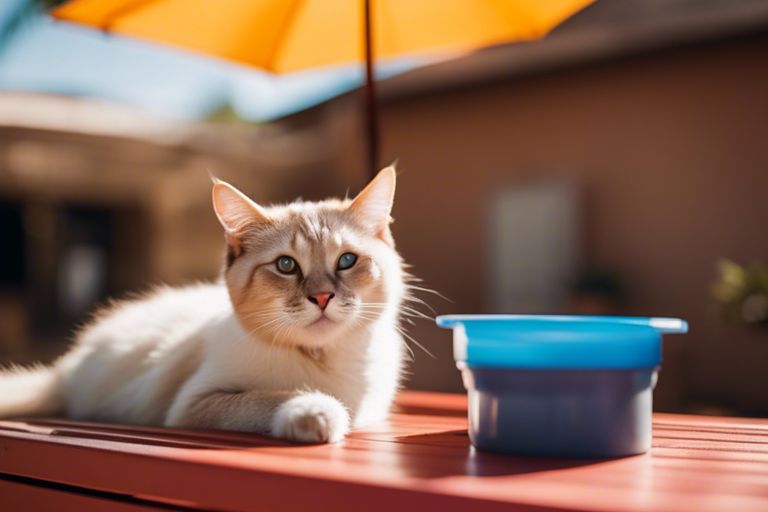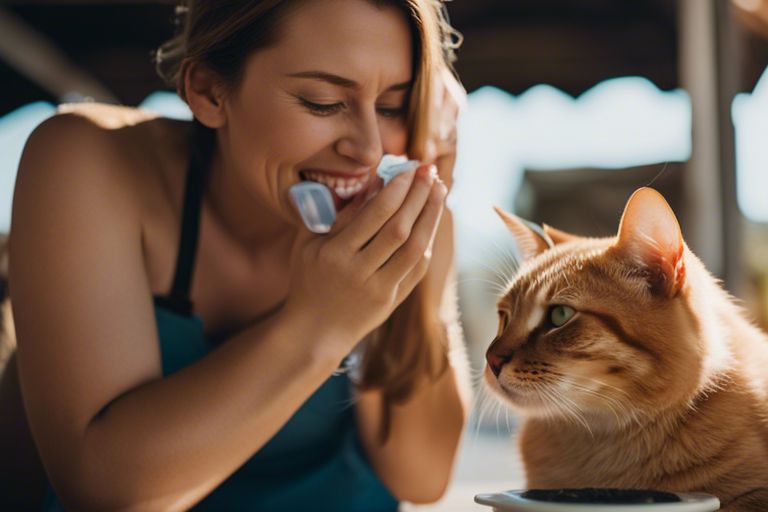Admittedly, recognizing the signs of heatstroke in your beloved feline can be a matter of life and death. Heatstroke is a serious and potentially fatal condition that can affect cats, especially during the hot summer months. It’s crucial for you to be able to identify the warning signs and take immediate action to prevent irreversible harm. Keep an eye out for excessive panting, drooling, lethargy, vomiting, and collapse as these are all indicators that your cat may be suffering from heatstroke. Familiarize yourself with these signs and make it a top priority to keep your cat cool and well-hydrated, especially in high temperatures.
Key Takeaways:
- Panting: If your cat is panting excessively, it could be a sign of heatstroke.
- Excessive drooling: In combination with panting, excessive drooling may be a sign of heatstroke in cats.
- Lethargy: A cat suffering from heatstroke may appear weak, tired, and unresponsive.
- Vomiting and diarrhea: Heatstroke can cause gastrointestinal distress, leading to vomiting and diarrhea in cats.
- Increased heart rate: A cat’s heart rate may be elevated in response to heatstroke.
Identifying Heatstroke in Cats
Some signs of heatstroke in cats can be subtle and easily overlooked. It’s important to be aware of the signs so that you can take action quickly if you notice any symptoms in your cat.
Behavioral Indicators
You may notice changes in your cat’s behavior such as excessive panting, restlessness, or agitation. Your cat may also seek out cooler areas in the home, such as lying on tile floors or in the shade. Additionally, your cat may exhibit signs of disorientation or confusion. If you notice any of these behavioral changes, it’s important to take them seriously and take measures to cool your cat down immediately.
Physical Symptoms
Physically, your cat may have a higher than normal body temperature. You can check this by using a rectal thermometer. A normal temperature for a cat is between 100.5 and 102.5 degrees Fahrenheit. If your cat’s temperature is above 104 degrees, this is a dangerous sign of heatstroke. Additionally, your cat may have red or pale gums, rapid heart rate, and/or vomiting. These physical symptoms require immediate attention as they indicate a severe case of heatstroke.
Risk Factors for Heatstroke in Cats
The risk of heatstroke in cats increases significantly in certain situations. Outdoor cats have a higher risk of heatstroke, especially during summer months. During this time, the temperature may rise significantly, and so, the risk of heatstroke in cats also increases. Other risk factors for heatstroke in cats include:
- Obesity making it harder for your cat to regulate its body temperature
- Being left in a car on a hot day
- Experiencing excessive exercise or play in hot weather
- Having respiratory problems
Any of these situations can put your cat at risk of developing heatstroke. To learn more about the symptoms of heatstroke in cats, visit Heat Stroke in Cats – Symptoms & Treatments.
Environmental Triggers
Environmental triggers such as high humidity and lack of shade can increase the risk of heatstroke in your cat. Being outdoors for extended periods, especially in the direct sunlight, can put your cat at a higher risk of heatstroke. Keep an eye on your cat’s behavior when they’re outside and ensure they have a cool and shaded area to retreat to if needed.
Preexisting Health Conditions
If your cat has respiratory problems or heart disease, they are at a higher risk of heatstroke. These preexisting conditions can make it harder for your cat to regulate their body temperature and can increase the severity of heatstroke if it does occur. Additionally, certain medications can also impact your cat’s ability to regulate body temperature, so it’s important to be aware of any potential risk factors.
First Aid and Immediate Actions
Unlike humans, cats cannot sweat to cool themselves down, so they are more susceptible to heatstroke. When it comes to heatstroke in cats, immediate action is crucial. Here’s what you can do to help your cat if you suspect they are suffering from heatstroke.
Immediate Measures to Take
If you suspect your cat is suffering from heatstroke, it’s important to act quickly. Bring your cat into a cool, shaded area and offer them water to drink. Use a damp cloth to gently cool their fur, focusing on their head, neck, and belly. You can also use a fan or air conditioning to help lower their body temperature. Be cautious not to use very cold water or ice, as this can cause their body temperature to drop too quickly, which can be dangerous.
When to Seek Veterinary Care
If your cat is showing signs of heatstroke, such as excessive panting, drooling, vomiting, or collapsing, it’s crucial to seek veterinary care immediately. Even if your cat’s symptoms seem to improve after taking initial first aid measures, it’s important to have them seen by a veterinarian. Heatstroke can cause internal damage that may not be immediately apparent, so it’s important to have your cat thoroughly evaluated by a professional.
Preventing Heatstroke in Cats
After learning about the signs of heatstroke in cats, it’s important to take steps to prevent this dangerous condition. By being proactive and implementing some key strategies, you can help keep your feline friend safe and comfortable during the hot summer months.
Environmental Management
One of the most effective ways to prevent heatstroke in cats is to manage their environment. Ensure that your home is equipped with adequate ventilation and cooling systems to keep the indoor temperature at a comfortable level. If your cat spends time outdoors, provide shaded areas where they can retreat from the sun. Additionally, consider using fans or air conditioning units in your cat’s favorite resting spots to help lower the temperature.
Monitoring and Acclimatization
You can also prevent heatstroke in cats by closely monitoring their behavior and helping them acclimatize to warmer temperatures. It’s essential to keep a close eye on your cat’s activity level and overall demeanor during hot weather. If you notice that they are panting excessively, lethargic, or showing any signs of distress, it’s important to take immediate action. To help your cat acclimate to the heat, gradually increase their exposure to warm weather over time, allowing their body to adjust to the changing temperatures.

Signs of Heatstroke in Cats
From above, it is important to be aware of the signs of heatstroke in cats to protect their well-being. Keep an eye out for excessive panting, lethargy, drooling, vomiting, and a rapid heart rate, since these are all common symptoms of heatstroke in cats. If you notice any of these signs, it is crucial to act quickly and move your cat to a cooler environment, offer them water to drink, and contact your veterinarian for further guidance. Remember, recognizing the signs and acting promptly can be crucial in preventing heatstroke from becoming a life-threatening condition for your feline friend.
FAQ
Q: What are the signs of heatstroke in cats?
A: The signs of heatstroke in cats include excessive panting, drooling, lethargy, vomiting, and rapid breathing. In severe cases, cats may experience seizures or collapse. It is important to seek immediate veterinary care if you suspect your cat is suffering from heatstroke.
Q: How can I prevent heatstroke in my cat?
A: To prevent heatstroke in your cat, provide plenty of fresh, cool water and shade for them to escape the heat. Avoid leaving your cat in a hot car or an environment with limited ventilation. Additionally, you can use fans or air conditioning to help keep their environment cool during hot weather.
Q: What should I do if I suspect my cat has heatstroke?
A: If you suspect your cat has heatstroke, it is important to move them to a cooler environment and offer small amounts of water to drink. However, it is critical to seek immediate veterinary care as heatstroke can be life-threatening if left untreated. Your vet will be able to provide the necessary medical treatment to help your cat recover from heatstroke.

Jayley, a devoted cat enthusiast, also writer for other cat blog as well. She aims to dedicated to providing comprehensive information, insights, and advice on everything you’d ever want to know about our whiskered companions.
